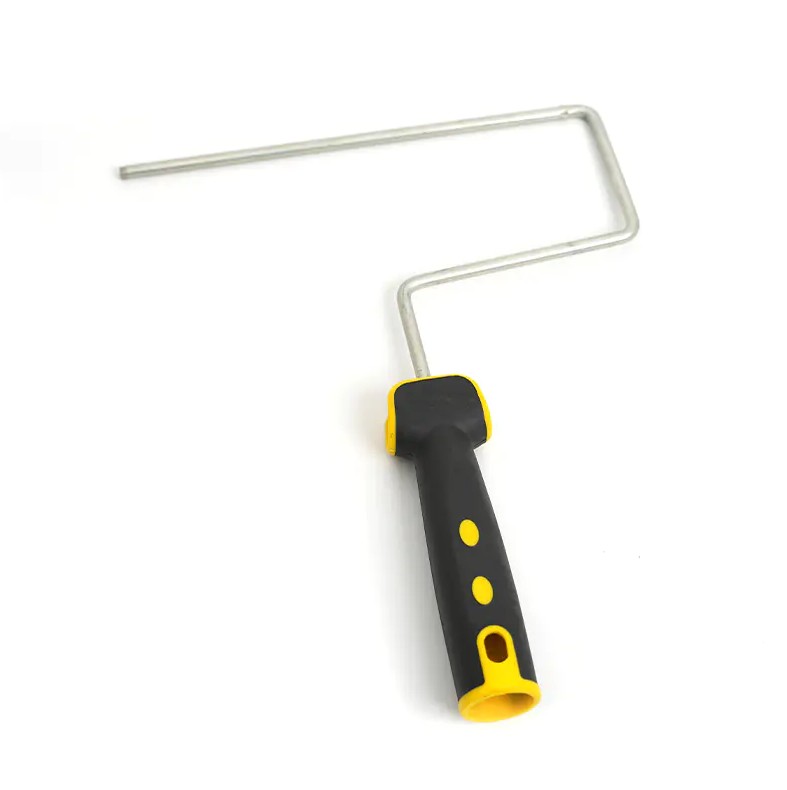Introduction: In the world of painting tools, the quality of the paint roller directly determines the final wall finish. Faced with a wide variety of paint rollers, the most pressing question for users is: "Which paint roller is the best?"
Content
I. Material is King: The Decisive Factor in Paint Roller Performance
The quality of a paint roller largely depends on the material of its bristles. Different materials give paint rollers different performance characteristics:
Wool (Natural or Synthetic):
- Advantages: Excellent paint absorption, achieving a delicate brushing effect and a smooth finish.
- Suitable for: Primarily used for low-viscosity paints such as latex paint and varnish, for interior wall painting where extreme uniformity is desired.
Polyester/Acrylic:
- Advantages: High cost-performance ratio, good resilience, strong solvent resistance, not prone to shedding, very durable.
- Suitable for: The most widely used type, suitable for water-based and oil-based paints.
Brushed (Long-bristled):
- Advantages: Longer bristles effectively penetrate rough surfaces, ensuring complete paint adhesion.
- Suitable for: Ideal for wall treatments, old wall renovations, or uneven surfaces such as cement walls.

II. Scenario Matching: What kind of roller brush does your project require?
Choosing the "best" roller brush requires matching its performance to the actual usage environment:
Interior Walls (Aesthetics First):
Recommended: Short-pile wool or high-density polyester roller brush.
Key Considerations: Ensures no shedding and a uniform surface finish.
Exterior Walls or Old Wall Renovation (Coverage First):
Recommended: Long-pile brush with a bristle texture.
Key Considerations: Strong coverage, capable of handling various rough surfaces.
Oil-based Paint or Varnish Applications:
Recommended: Corrosion-resistant polyester or Teflon-coated paint roller.
Key Considerations: Solvent resistance and overall durability of the bristles.
Fine Edge Finishing and Local Repairs:
Recommended: High-precision short-pile roller brush (usually small size).
Key Considerations: Control over coating edges, ensuring clean edges.
III. How to Judge the Quality of a Roller Brush?
To determine which roller brush is the "best" durable option, consider the following:
- Check resilience and density: High-quality roller brushes have high-density bristles that quickly return to their original shape after being lightly pressed; otherwise, they are prone to leaving brush marks.
- Confirm the bonding process: Inspect the connection between the brush sleeve and the roller core. Top-tier roller brushes use specialized processes to ensure they don't detach or shed bristles during high-speed work, guaranteeing continuous application.
- Choose the appropriate size: Larger sizes (such as 9 inches) are for efficient work on large wall areas; smaller sizes are better suited for details and corner work.
For users comparing specific models and accessories, consider the complete system: roller sleeve material, roller core quality, and the Paint Roller frame or handle design. A well-matched combination will deliver the best painting performance and user experience.
When selecting, also consider durability and replacement availability of roller sleeves—the long-term cost and finish quality often depend more on sleeve material and replacement frequency than on the initial price of the Paint Roller. If you need a recommendation for specific sleeve materials or frame types, look for high-density polyester sleeves paired with a sturdy ergonomic frame from reputable manufacturers.
In summary, there is no single "best" paint roller for all situations. Choose a Paint Roller and sleeve material that match your paint type, surface texture, and desired finish to achieve the optimal result.



 Español
Español





